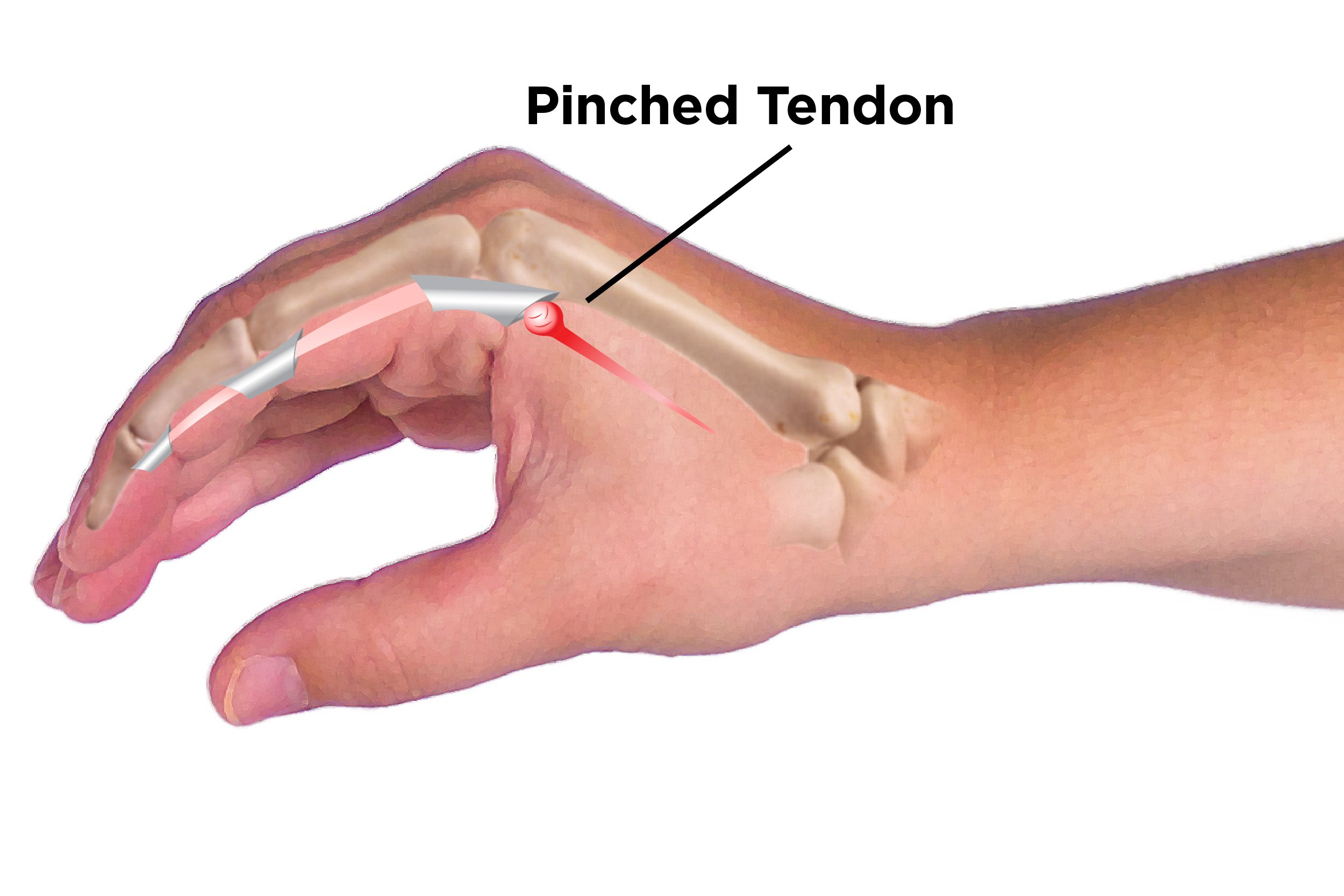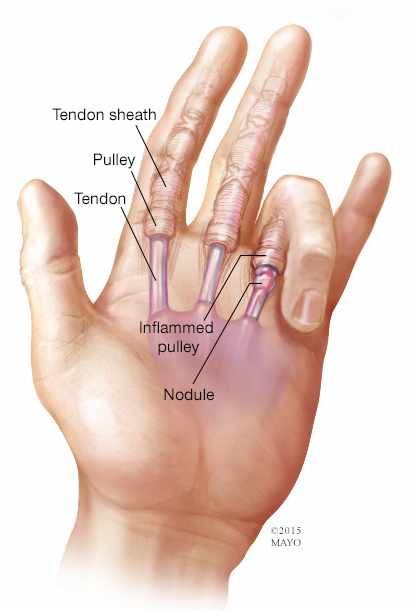What should I do with my clicky finger?

Trigger digits are a common condition that patients present with. Usually it is more a nuisance problem, but sometimes when a finger “locks” and stays in a flexed position it can lead to permanent damage to the joint and reduce the likelihood of regaining the motion in the finger.


A trigger finger or thumb is caused by thickening of the covering sheath through which a flexor tendon runs. The A1 pulley thickens and causes friction against the tendon below. This leads to a cycle of inflammation as the thickened tendon further irritates the pulley and worsens the friction. As this progresses, the tendon develops a nodule which catches on the pulley above, causing it to lock. When the nodule forcibly moves through the pulley, it results in the “trigger” effect, hence the name of the condition.
The non-surgical treatment of trigger digits can involve splinting, massage, stretches and injections. A recently published paper in the Journal of Hand Surgery (EUR) outlined an evidence-based treatment algorithm which can be used to guide management. This meta analysis showed that local steroid (or “cortisone”) injections can be a safe and effective first line treatment for trigger digits. However, when compared to surgery, injections are associated with an increased rate of ongoing symptoms at 6 months after intervention.
The surgical treatment involves release of the A1 pulley through a small incision in the palm. Under an anaesthetic, the important digital nerves are identified and protected, and the pulley is isolated. This is then released to allow the tendon to run freely without locking or catching. As the tendon recovers it’s free motion, there is no further friction and so the nodule tends to settle down with time. Once released, it is exceedingly rare for the digit to trigger again. A very important aspect of the treatment and recovery is scar massage to the area. This helps break down adhesions to the tendon and the pulley and improve the return of full range of motion. It also helps soften the skin wound and scar that develops after surgical release.
For more information on trigger fingers, please click on our link Trigger Fingers


